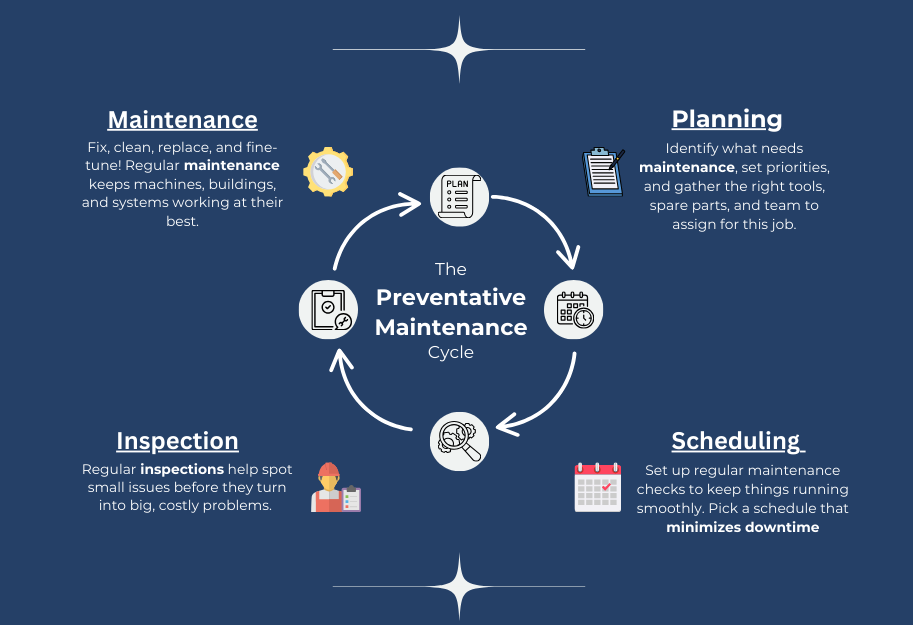Understanding Preventive Maintenance
Preventive maintenance involves a systematic approach to scheduling regular equipment inspections to identify and address potential issues before they lead to significant failures. This process also includes routine tasks such as cleaning and lubricating essential machinery. Unfortunately, many businesses overlook or inadequately manage their maintenance routines, which often results in increased repair costs and extended downtime as conditions worsen. By implementing daily maintenance checks, businesses can save time and money on future repairs while ensuring a safer workplace.
Why is Preventive Maintenance Crucial?
Preventive maintenance offers several key benefits for organizations, making it an essential component of efficient business operations. Here are some of the primary advantages:
1. Reduced Downtime
One of the main benefits of preventive maintenance is reduced downtime. While achieving zero downtime is typically not feasible, scheduled maintenance can significantly minimize the duration of equipment shutdowns. Regular assessments lessen the time needed for repairs compared to addressing issues only when equipment fails. Reducing machinery downtime helps avoid costly losses and ensures operations run smoothly, making it vital to establish a preventive maintenance schedule.
2. Enhanced Equipment Performance and Longevity
Routine inspections and maintenance keep equipment performing at its best and allow for ongoing improvements. As equipment degrades over time, its efficiency diminishes, often leading to costly repairs or replacements. Scheduled maintenance helps monitor and enhance equipment performance, preserving its condition and extending its lifespan. Proper care ensures optimal performance and maximizes the equipment’s operational life.

3. Improved Safety Conditions
Operating equipment that is not well-maintained can create significant safety hazards. Regular maintenance checks help prevent such hazards by ensuring equipment is in good working order. Preventive maintenance enhances safety by reducing the risk of accidents and injuries, ensuring that all assets function correctly and safely.
4. Cost Savings
Unplanned downtime, production delays, missed deadlines, and idle workers can be expensive for organizations. Preventive maintenance minimizes these costs by addressing minor issues before they become major problems. Regular inspections and minor repairs help avoid severe equipment damage and reduce the need for overtime pay for emergency repairs. By investing in preventive maintenance, organizations can focus on avoiding equipment failure and save money in the long run.
CMMS and Preventive Maintenance
To manage the various aspects of preventive maintenance efficiently, a Computerized Maintenance Management System (CMMS) can be invaluable. A CMMS provides a centralized record of all maintenance activities, tasks, updates, and reports. It helps automate and streamline preventive maintenance processes, saving time and reducing costs. Integrating a CMMS into your preventive maintenance strategy can optimize daily operations and is an essential tool for any maintenance team.
Ready to transform your maintenance operations? Discover the benefits of implementing a CMMS to enhance efficiency, reduce downtime, and streamline workflows. Start your journey towards smarter maintenance management today!



